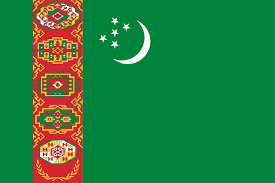Difference between revisions of "Language/Turkmen/Grammar/Gender"
m (Quick edit) |
m (Quick edit) |
||
| Line 65: | Line 65: | ||
|description=In this lesson, we will learn about the gender in Turkmen language. Gender is an important part of grammar in Turkmen and it affects the way words are used in sentences. We will look at how to identify the gender of nouns and how to use them correctly in sentences. | |description=In this lesson, we will learn about the gender in Turkmen language. Gender is an important part of grammar in Turkmen and it affects the way words are used in sentences. We will look at how to identify the gender of nouns and how to use them correctly in sentences. | ||
}} | }} | ||
==Related Lessons== | |||
* [[Language/Turkmen/Grammar/To-have|To have]] | |||
* [[Language/Turkmen/Grammar/Personal-pronouns|Personal pronouns]] | |||
* [[Language/Turkmen/Grammar/Adverbs|Adverbs]] | |||
* [[Language/Turkmen/Grammar/Pronouns|Pronouns]] | |||
* [[Language/Turkmen/Grammar/The-Subjunctive-Mood|The Subjunctive Mood]] | |||
* [[Language/Turkmen/Grammar/Word-order|Word order]] | |||
* [[Language/Turkmen/Grammar/Personal-Pronouns|Personal Pronouns]] | |||
* [[Language/Turkmen/Grammar/Conditional-Mood|Conditional Mood]] | |||
* [[Language/Turkmen/Grammar/Question-particle–my-mi|Question particle–my mi]] | |||
* [[Language/Turkmen/Grammar/Nouns|Nouns]] | |||
* [[Language/Turkmen/Grammar/Verbs|Verbs]] | |||
* [[Language/Turkmen/Grammar/Some-Continous-Moods|Some Continous Moods]] | |||
* [[Language/Turkmen/Grammar/Negation|Negation]] | |||
* [[Language/Turkmen/Grammar/Past-in-the-past-(pluperfect)|Past in the past (pluperfect)]] | |||
{{Turkmen-Page-Bottom}} | {{Turkmen-Page-Bottom}} | ||
Revision as of 21:23, 25 February 2023
Hi Turkmen learners! 😊
In this lesson, we will learn about the gender in Turkmen language. Gender is an important part of grammar in Turkmen and it affects the way words are used in sentences. We will look at how to identify the gender of nouns and how to use them correctly in sentences.
Gender in Turkmen
In Turkmen, nouns have two genders: masculine and feminine. The gender of a noun affects the way it is used in a sentence. For example, the word for 'book' is kitap in Turkmen. This word is masculine, so it takes the masculine form of adjectives and verbs.
Masculine Nouns
Masculine nouns usually end in -p, -t, -k, or -g. Here are some examples of masculine nouns:
| Turkmen | Pronunciation | English Translation |
|---|---|---|
| kitap | ki-tahp | book |
| oglan | oh-glahn | boy |
| uçak | oo-chahk | plane |
| adam | ah-dahm | man |
Feminine Nouns
Feminine nouns usually end in -a, -e, -y, or -w. Here are some examples of feminine nouns:
| Turkmen | Pronunciation | English Translation |
|---|---|---|
| kitaplar | ki-tahp-lahr | books |
| gyz | gihz | girl |
| ýaşuly | yahsh-oo-lee | old woman |
| ýol | yohl | road |
Using Gender in Sentences
Once you know the gender of a noun, you can use it correctly in a sentence. For example, if you want to say "The book is big", you would use the masculine form of the adjective ulug (big): kitap ulug. If you want to say "The books are big", you would use the feminine form of the adjective ulug (big): kitaplar ulug.
Practice
To improve your Turkmen Grammar, you can also use the Polyglot Club website. Find native speakers and ask them any questions!
Quiz
Test your knowledge of gender in Turkmen with this quiz:
- What is the gender of the word uçak (plane)?
- What is the feminine form of the adjective ulug (big)?
- How do you say "The books are big" in Turkmen?
Answers
- Masculine
- Ulug
- Kitaplar ulug
➡ If you have any questions, please ask them in the comments section below.
➡ Feel free to edit this wiki page if you think it can be improved. 😎
Related Lessons
- To have
- Personal pronouns
- Adverbs
- Pronouns
- The Subjunctive Mood
- Word order
- Personal Pronouns
- Conditional Mood
- Question particle–my mi
- Nouns
- Verbs
- Some Continous Moods
- Negation
- Past in the past (pluperfect)
